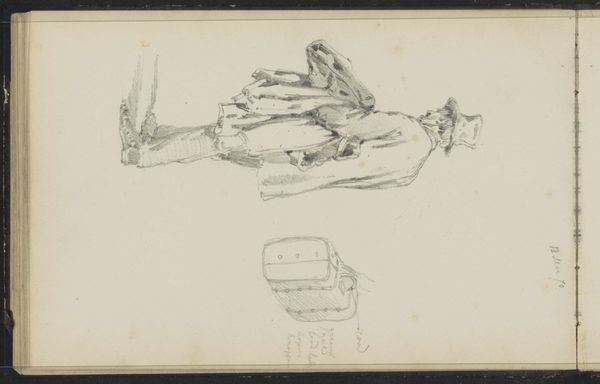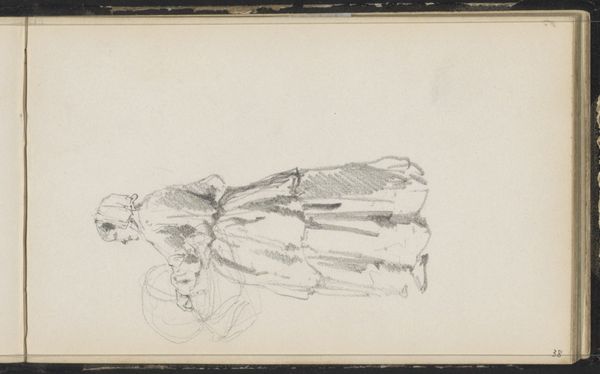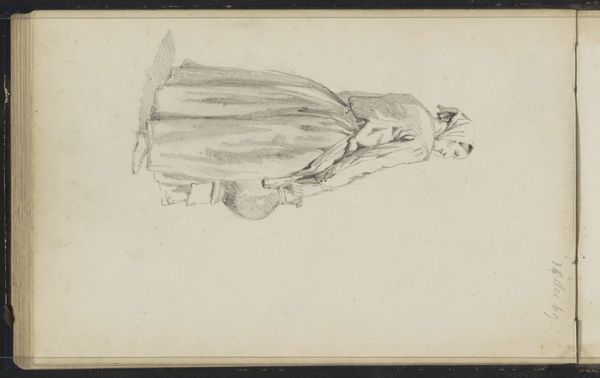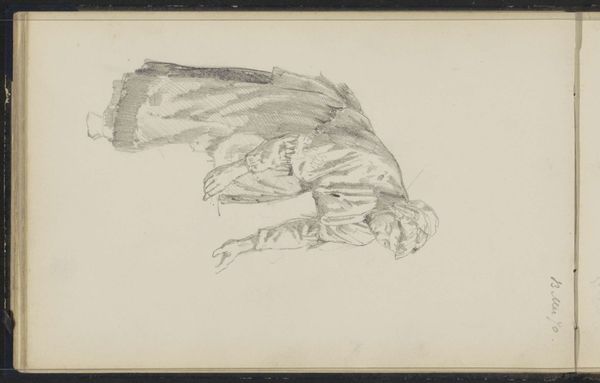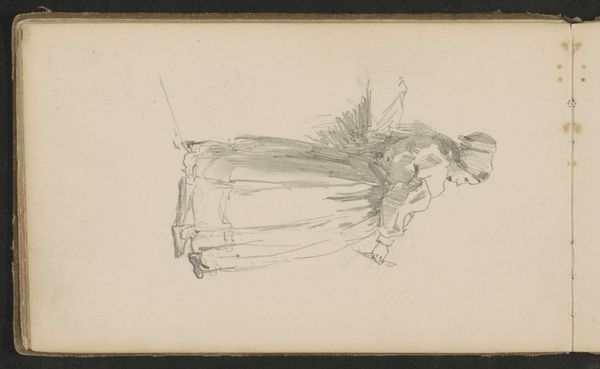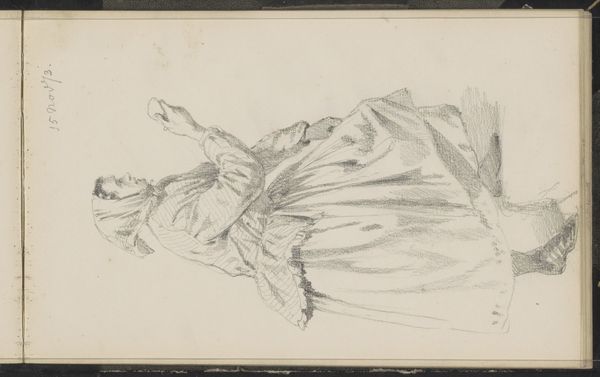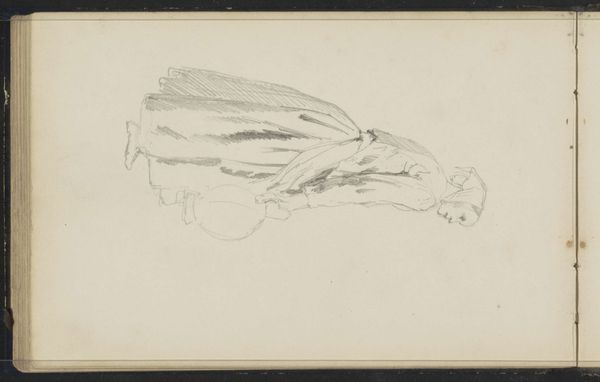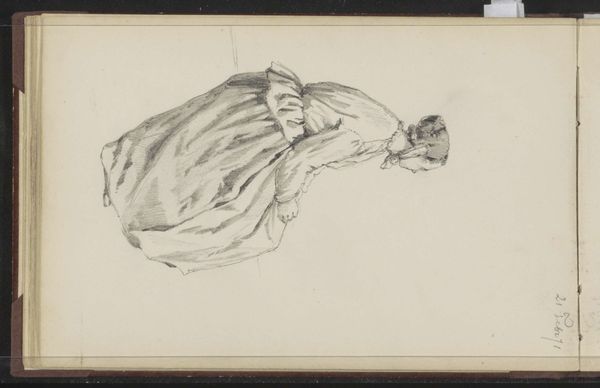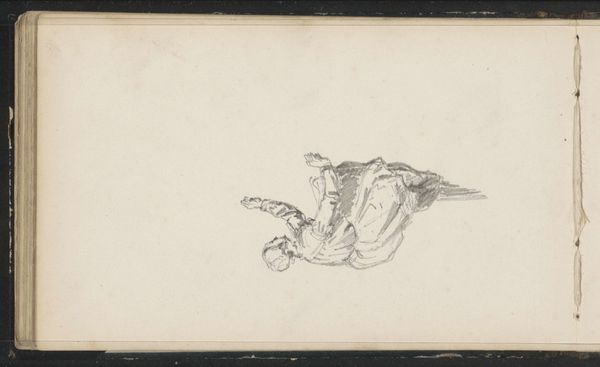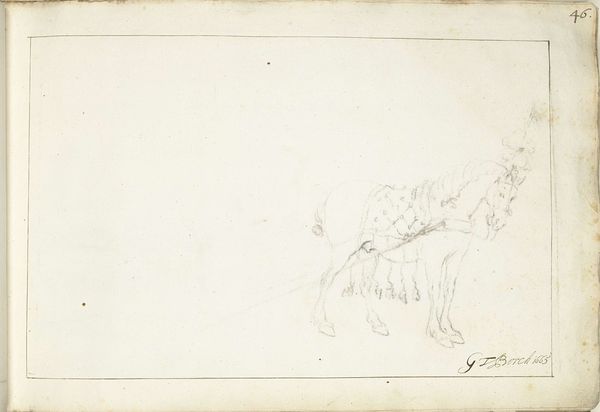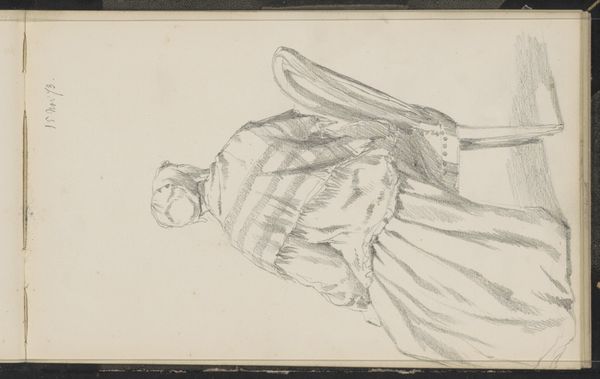
Copyright: Rijks Museum: Open Domain
Editor: So, this is "Zittende vrouw op een stoel" by Cornelis Springer, likely from 1870 to 1875. It’s a pencil drawing on paper, and the quick strokes give it a very fleeting, almost dreamlike quality. What strikes you when you look at this work? Curator: What interests me is the evidence of its making, of the artist's hand. Look at the paper itself, the chain lines, the texture; it’s not just a support, but part of the work. The rapid strokes you mentioned highlight the immediacy of the artistic process, the direct connection between Springer’s labor and the image before us. How might the social standing of an artist like Springer, afforded access to these materials, contrast with that of someone from a lower socioeconomic background also using readily available pencils and paper? Editor: That's a good question. I hadn't really thought about the accessibility of these materials back then. I suppose paper, even relatively simple paper like this, still represented a certain level of privilege. It makes you wonder who Springer was drawing for and how that context influenced the work. Curator: Exactly! We tend to think of “high art” as disconnected from labor, but the materials themselves, their procurement, and the artist’s skill are all products of specific social and economic conditions. How does examining the materiality of the drawing challenge the traditional Romantic associations you see in it? Editor: Well, by focusing on the physical aspects, we're moving away from purely aesthetic or emotional interpretations and thinking about the social factors that made its creation possible. So, it's Romantic in style, but grounded in material reality. Curator: Precisely. Looking closely at the materials and means of production can offer richer understandings of even seemingly straightforward artworks. Editor: I see what you mean. Considering the paper, the pencil, and the act of drawing itself, rather than just the image, really opens up a new perspective. Thanks for pointing that out.
Comments
No comments
Be the first to comment and join the conversation on the ultimate creative platform.
